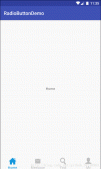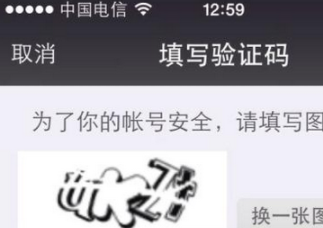本文实例讲述了android不使用自定义布局情况下实现自定义通知栏图标的方法。分享给大家供大家参考,具体如下:
自定义通知栏图标?不是很简单么。自定义布局都不在话下!
是的,有xml布局文件当然一切都很简单,如果不给你布局文件用呢?
听我慢慢道来!
首先怎么创建一个通知呢?
1.new 一个
参数:图标 id,发送到状态栏瞬间的文字,当前时间
2.设置详细信息:标题、内容、intent
|
1
2
|
pendingintent contentintent = pendingintent.getbroadcast(this, 0, intent, pendingintent.flag_update_current);n.setlatesteventinfo(this, "早上好!", "今天是个晴朗的天气!", contentintent); |
3.发送到通知栏
|
1
2
|
notificationmanager mnm = (notificationmanager) getsystemservice(context.notification_service);mnm.notify(1001, n); |
这样就完成了一个通知的展示,很简单!
我们来看看 n.setlatesteventinfo 干了些什么呢
|
1
2
3
4
5
6
7
8
9
10
11
12
13
14
15
16
17
18
19
20
21
22
23
24
25
26
27
28
29
30
31
|
public void setlatesteventinfo(context context, charsequence contenttitle, charsequence contenttext, pendingintent contentintent) { // todo: rewrite this to use builder remoteviews contentview = new remoteviews(context.getpackagename(), r.layout.notification_template_base); if (this.icon != 0) { contentview.setimageviewresource(r.id.icon, this.icon); } if (priority < priority_low) { contentview.setint(r.id.icon, "setbackgroundresource", r.drawable.notification_template_icon_low_bg); contentview.setint(r.id.status_bar_latest_event_content, "setbackgroundresource", r.drawable.notification_bg_low); } if (contenttitle != null) { contentview.settextviewtext(r.id.title, contenttitle); } if (contenttext != null) { contentview.settextviewtext(r.id.text, contenttext); } if (this.when != 0) { contentview.setviewvisibility(r.id.time, view.visible); contentview.setlong(r.id.time, "settime", when); } if (this.number != 0) { numberformat f = numberformat.getintegerinstance(); contentview.settextviewtext(r.id.info, f.format(this.number)); } this.contentview = contentview; this.contentintent = contentintent;} |
可以看到,他实际上就是使用系统默认布局为我们创建了一个 remoteviews ,remoteviews 是专门用来跨进程显示的 view ,详情参考官方文档:http://developer.android.com/intl/zh-cn/reference/android/widget/remoteviews.html
看这句:
其实就是设置图标了:
参数1:用来显示图标的 imageview 的 id
参数2:图标 id
但是还有一个这样的方法:
用 bitmap 来设置图标。
而 notifycation 里面有个参数:notification.contentview,仔细看,setlastesteventinfo 方法里创建的 remoteviews 就是他,所以你知道该怎么做了!
但是这里还有一个问题?r.id.icon 怎么获取,这个东西其实在 com.android.internal.r 这个里面,但是这个类我们访问不到怎么办?
反射呗, java 的反射可谓是万能啊,啥都可以拿到只要他在。
|
1
2
3
4
|
class<?> clazz = class.forname("com.android.internal.r$id"); field field = clazz.getfield("icon"); field.setaccessible(true); int id_icon = field.getint(null); |
|
1
2
3
4
5
|
n.setlatesteventinfo(context, title, msg, contentintent);n.flags |= notification.flag_auto_cancel;if(n.contentview != null && icon != null){ n.contentview.setimageviewbitmap(id_icon, icon);} |
发出通知,下拉通知栏看看,图标是不是变了^_^
此外这里还有一个小细节,就是你 new notifycation() 是传进去的图标会作为状态栏的小图标,小图标尺寸在 hdpi 下面放 32x32 的就可以

所以你可以第一次传小图标,然后通过 contentview 设置大图标,这样就ok了

希望本文所述对大家android程序设计有所帮助。
















